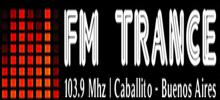Electronica is a broad range of percussive electronic music genres made largely for nightclubs, raves, and festivals. It is generally produced for playback by disc jockeys (DJs) who create seamless selections of tracks, called a mix, using record players or CD players and a DJ mixer. Styles of electronica include techno, house, trance, drum and bass, dubstep, ambient, breakbeat, hardcore, and electro, among others. The advent of digital audio workstations (DAWs) has allowed musicians to produce and perform electronic music using computers.
The origins of electronica can be traced back to the 1970s with the development of synthesizers and drum machines. Early pioneers like Kraftwerk and Giorgio Moroder laid the groundwork for what would become a global phenomenon. Kraftwerk's use of synthesizers and drum machines in albums like "Autobahn" (1974) and "Trans-Europe Express" (1977) set the stage for electronic music's future directions. Meanwhile, Moroder's work on Donna Summer's "I Feel Love" (1977) showcased the potential of electronic dance music in a pop context.
The 1980s saw the rise of house and techno in Chicago and Detroit, respectively. House music, characterized by its four-on-the-floor beats and soulful vocals, became a staple in nightclubs and underground parties. Techno, on the other hand, emerged from Detroit's industrial landscape, featuring repetitive beats and futuristic sounds. Both genres influenced the development of electronica worldwide.
The 1990s marked a significant expansion of electronica, with the rise of rave culture and the proliferation of electronic music festivals. Subgenres like trance, characterized by its euphoric melodies and steady rhythms, and drum and bass, known for its fast tempos and intricate drum patterns, gained popularity. The UK's acid house and happy hardcore scenes also contributed to the genre's diversity.
Ambient electronica, pioneered by artists like Brian Eno and Aphex Twin, explored more atmospheric and textural sounds, often blurring the lines between music and soundscapes. This subgenre found its way into film scores, video games, and even meditation practices, demonstrating electronica's versatility.
The turn of the millennium brought new innovations with genres like dubstep and electroclash. Dubstep, originating from South London, featured heavy basslines and syncopated rhythms, often incorporating elements of reggae and dancehall. Electroclash, a fusion of electronic music and punk rock, emerged in the late 1990s and early 2000s, with artists like Fischerspooner and Ladytron blending synthesizers with provocative lyrics and fashion.
In recent years, electronica has continued to evolve, incorporating elements from various musical traditions. Artists like Skrillex and Deadmau5 have brought electronic music into the mainstream, while underground scenes continue to push boundaries with experimental sounds and techniques. The use of software like Ableton Live and Native Instruments has democratized music production, allowing artists from all over the world to contribute to the genre's rich tapestry.
Electronica's influence extends beyond music, impacting fashion, art, and culture. Its futuristic aesthetics and innovative approaches have inspired countless creators, making it a cornerstone of contemporary popular culture. Whether in the form of high-energy club tracks or introspective ambient pieces, electronica continues to captivate listeners with its boundless creativity and technical prowess.
 FM TranceFM Trance
FM TranceFM Trance 286
Argentina Electronica
286
Argentina Electronica
